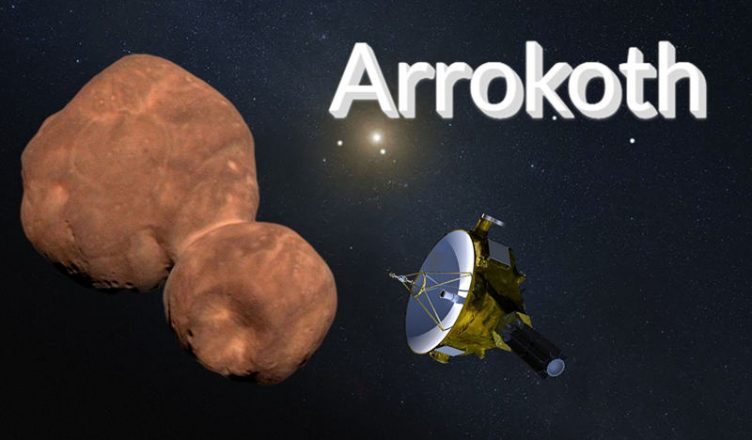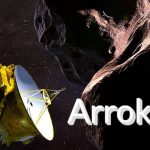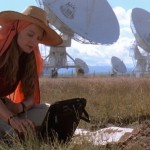In 2019, NASA (the United States’ National Aeronautics and Space Administration) officially named the most distant celestial object ever visited by a human spacecraft, known as 2014 MU69 (asteroid number 486958), “Arrokoth.” This name comes from the language of the Powhatan/Algonquian people, Native Americans, and it means “sky.”
The Naming of Arrokoth
The history of the Powhatan tribe dates back to the early 17th century. In 1606, the English established their first permanent settlement in Virginia, called Jamestown, with the Powhatan tribe as the largest neighboring tribe, led by Chief Powhatan. Conflict between the English colonizers and the Native Americans escalated due to the aggressive actions of the British. Initially, the unfamiliar English settlers faced various hardships and attacks, leading them to capture Powhatan’s daughter, Pocahontas, as a hostage to force the Native Americans into a truce. However, after spending a year in the colony, the Native American princess converted to Christianity, adopted the English name Rebecca, and fell in love with a young British merchant named John Rolfe. As a result, King James I of England recognized Powhatan as a king, and Powhatan acknowledged the presence of Jamestown, leading to a peace agreement between the two “nations.”
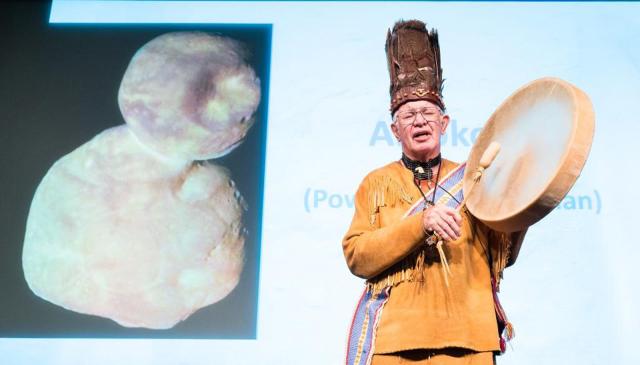
Subsequently, the relationship between the Native Americans and the colonists improved, with the Native Americans providing food and teaching the colonists how to grow American crops, hunt, and build. This history is the origin of Thanksgiving. However, despite these initial friendly interactions, the colonizers continued to oppress and exploit the Native Americans, pushing them into reserved lands in the west, surrounded by fences, resembling concentration camps. It wasn’t until 1968 that the United States passed the “Indian Civil Rights Act” under human rights pressure, gradually recognizing limited autonomy for over 500 Native American tribes.
Perhaps as a coincidence, in the same year that NASA’s New Horizons spacecraft flew by Pluto in 2015, the U.S. federal government finally recognized the Powhatan tribe. The year before, when selecting a potential target in the Kuiper Belt for New Horizons’ flyby, an interesting object, possibly a binary celestial body, was discovered: 2014 MU69. Both the Space Telescope Science Institute of the Hubble Space Telescope and the Johns Hopkins University Applied Physics Laboratory, associated with New Horizons, are located in Maryland, near the Chesapeake Bay, which is the spiritual homeland of the Powhatan tribe.
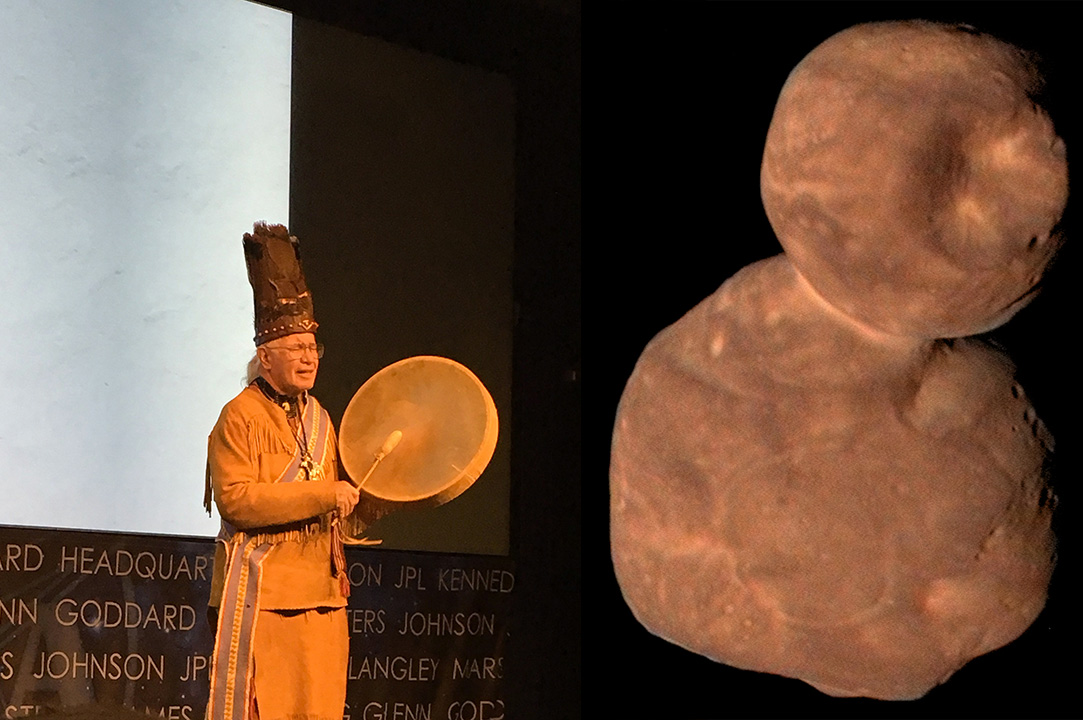
NASA’s explanation for naming Arrokoth is that New Horizons and the Hubble Telescope work far from their home base, similar to the Powhatan people’s situation of being displaced from their homeland. They are all wanderers of the Chesapeake Bay, and therefore, naming 2014 MU69 in the Powhatan language is appropriate. “Sky” represents the curiosity about the universe, exploration of the unknown, and thirst for knowledge shared by both indigenous and colonial people, as well as all humans, regardless of race and culture.
In fact, despite NASA’s previous nickname for “Arrokoth” being “Ultima Thule,” which was questioned for its association with the mythical Aryan homeland promoted by the Nazis, this time, the Native American naming carries political significance, aiming to ease ethnic tensions in the United States and present a more positive image internationally.
Regardless, the symbolism of the name “Sky” is meaningful, invoking the innate curiosity of every person about the sky and the universe, while the Native American background adds an element of mystery. In summary, it’s a fitting name.
NASA’s New Horizons: Record-Breaking Exploration of Arrokoth
NASA’s New Horizons spacecraft achieved a record-breaking exploration of Arrokoth, located 4 billion miles from Earth, making it the farthest celestial object ever explored by humans. After obtaining the consent of Powhatan tribe elders and representatives, the New Horizons team proposed the name “Arrokoth” to the International Astronomical Union and the Minor Planet Center, the international authorities responsible for naming objects in the Kuiper Belt. On November 13, 2019, this name was officially announced at a ceremony at NASA headquarters in Washington, D.C.
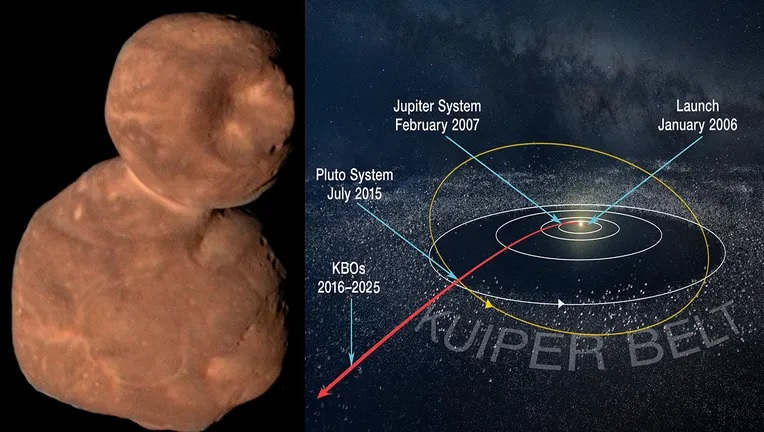
Alan Stern, the principal investigator of the New Horizons project at the Southwest Research Institute in Boulder, Colorado, stated, “‘Arrokoth’ reflects the desire for the sky and curiosity about other planets and worlds beyond Earth.” This aspiration to explore and learn about the unknown universe is at the core of the New Horizons mission, and the team is honored to celebrate the discovery of this celestial body with the Powhatan tribe and the people of Maryland.
Launched in January 2006, New Horizons conducted a historic flyby of the Pluto system on July 14, 2015, after utilizing a gravity assist from Jupiter in February 2007 for acceleration and scientific observations. On New Year’s Day 2019, New Horizons embarked on its unprecedented journey to explore Arrokoth. The New Horizons team affectionately referred to Arrokoth as “Ultima Thule,” which is located approximately 1 billion miles beyond Pluto, marking the farthest-ever flyby by a spacecraft from Earth.
Arrokoth is one of thousands of icy, frozen objects in the Kuiper Belt, the “third zone” of the solar system beyond the inner rocky planets and the outer gas giants. In 2014, the New Horizons team, led by Marc Buie at the Southwest Research Institute, discovered Arrokoth using the powerful Hubble Space Telescope.
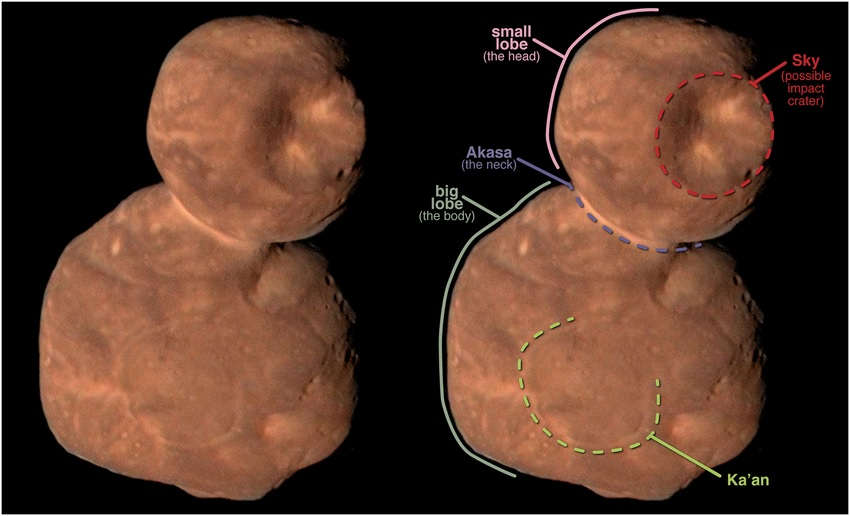
Buie stated, “Data from Arrokoth provides clues about planetary formation and the origin of the cosmos. We believe that this ancient celestial body, formed by the merger of two different spheres, may hold answers that contribute to our understanding of the origins of life on Earth.”
According to the naming conventions of the International Astronomical Union, the team that discovers a celestial body has the privilege of selecting a permanent name for it. In this case, the New Horizons team combined the culture of the indigenous people living in the area where the celestial body was discovered. In this situation, both the Hubble Space Telescope (controlled by the Space Telescope Science Institute) and the New Horizons mission (operated by the Johns Hopkins University Applied Physics Laboratory) were based in Maryland, a region closely connected to the Powhatan people’s culture due to its proximity to Chesapeake Bay.
Lori Glaze, director of NASA’s Planetary Science Division, said, “We gratefully accept the Powhatan people’s gift. Naming it Arrokoth signifies the power and endurance of the Powhatan-Algonquian people, native to the Chesapeake region. Their legacy will continue to serve as a guiding light for all those exploring the meaning of cosmic origins and the connection between humanity and the universe.”
The Pamunkey Reservation in King William County, Virginia, is the oldest Native American reservation in the United States, established through treaties in the 17th century and federally recognized in July 2015. The Pamunkey tribe and its villages played a significant role in the initial Powhatan alliance, and today, members of the Pamunkey tribe collaborate with other Powhatan tribes in Virginia. Many direct descendants still live on the Pamunkey Reservation, while others have moved to Northern Virginia, Maryland, Washington, D.C., New York, and New Jersey.
The Johns Hopkins University Applied Physics Laboratory, located in Laurel, Maryland, designed, built, and operates the New Horizons spacecraft and manages the New Horizons mission for NASA’s Science Mission Directorate. NASA’s Marshall Space Flight Center in Huntsville, Alabama, manages the planetary mission program office responsible for NASA’s management of the mission. The Southwest Research Institute, based in San Antonio, Texas, directs the New Horizons mission under the leadership of Principal Investigator Alan Stern and oversees the scientific team, payload operations, and flyby science planning. New Horizons is part of NASA’s New Frontiers program, managed by NASA’s Marshall Space Flight Center.
END:
This historic exploration of Arrokoth by NASA’s New Horizons spacecraft serves as a testament to humanity’s unceasing curiosity and determination to uncover the mysteries of the universe, regardless of distance or challenges. The name “Arrokoth,” with its deep cultural and historical significance, represents a bridge between Native American heritage and the global pursuit of knowledge about our cosmos.
More UFOs and mysterious files, please check out our YouTube channel: MysFiles
Is the moon artificial? Evidence Proves the Moon Was Unnaturally Formed
